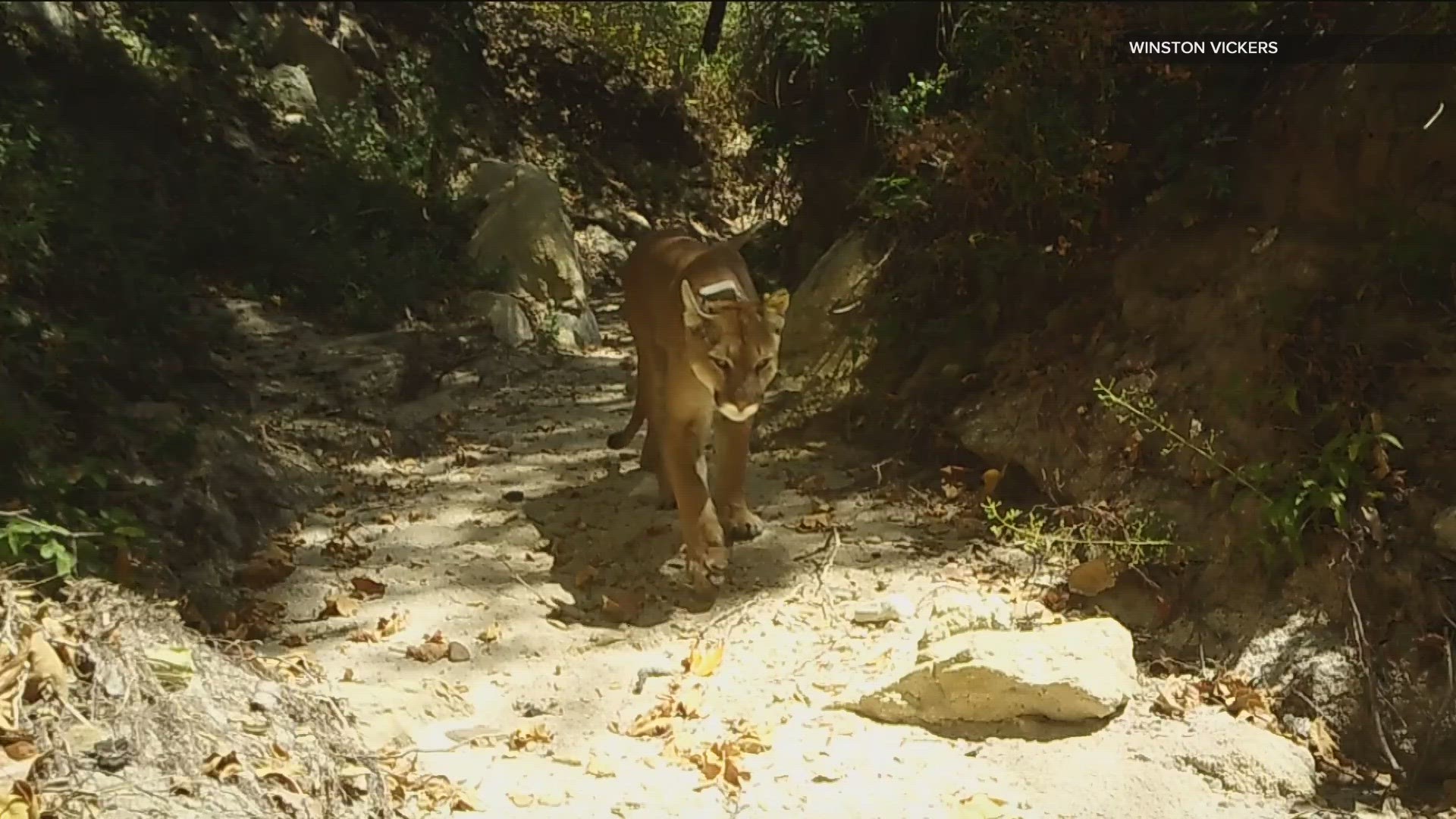SAN DIEGO — Fraser Shilling is the Director of the Road Ecology Center at UC Davis and says California's car culture is hard on mountain lions.
"Mountain Lions being hit by cars has been going on probably ever since there were cars on highways in California," said Shilling. "In California, we have so much traffic, so many roads that where mountain lions are moving, we've built barriers. We've built road barriers; we've also built moving barriers that could stop them or kill them when they try to go there."
As apex predators mountain lions traverse large areas looking for resources this usually means they have to cross a road.
"They might be really hungry, they're in search of a mate, they're young males dispersing away from an adult mountain lion, and sometimes that puts them in conflict with the road."
Some of the highest death rates occur where the human population is the largest, the San Francisco Bay area and here in Southern California.
"In the case of mountain lions in Southern California that is critical. Because so many of them are getting killed that the populations are always at risk of winking out essentially," said Shilling.
That could result in 'micro-extinction' from an area - one example was the case of the most famous mountain lion, P-22, who was photographed under the Hollywood sign and later euthanized in December after a car strike. Just one mountain lion killed in a week in California from a car strike has resulted in a push to protect the big cats. Shilling says now is the time to help them and other animals by providing more wildlife crossings.
"Getting them safely across the roads, and that's where Wildlife crossings come in," said Shilling. "We know how to make them effective and therefore are solutions for wildlife."
Wildlife crossing can go over freeways like the Wallis Annenberg crossing planned to go over the 101 or they can go under.
"They are essentially tunnels to get the wildlife from one side to the other, and they're almost always associated with fencing. So. you have fencing and a crossing structure," added Shilling.
And now there is a fund to do that.
"Recently the Wildlife Conservation Board and the State have invested a lot into new Wildlife crossing structures. We can build our way out of this with more fencing and Wildlife crossings."

